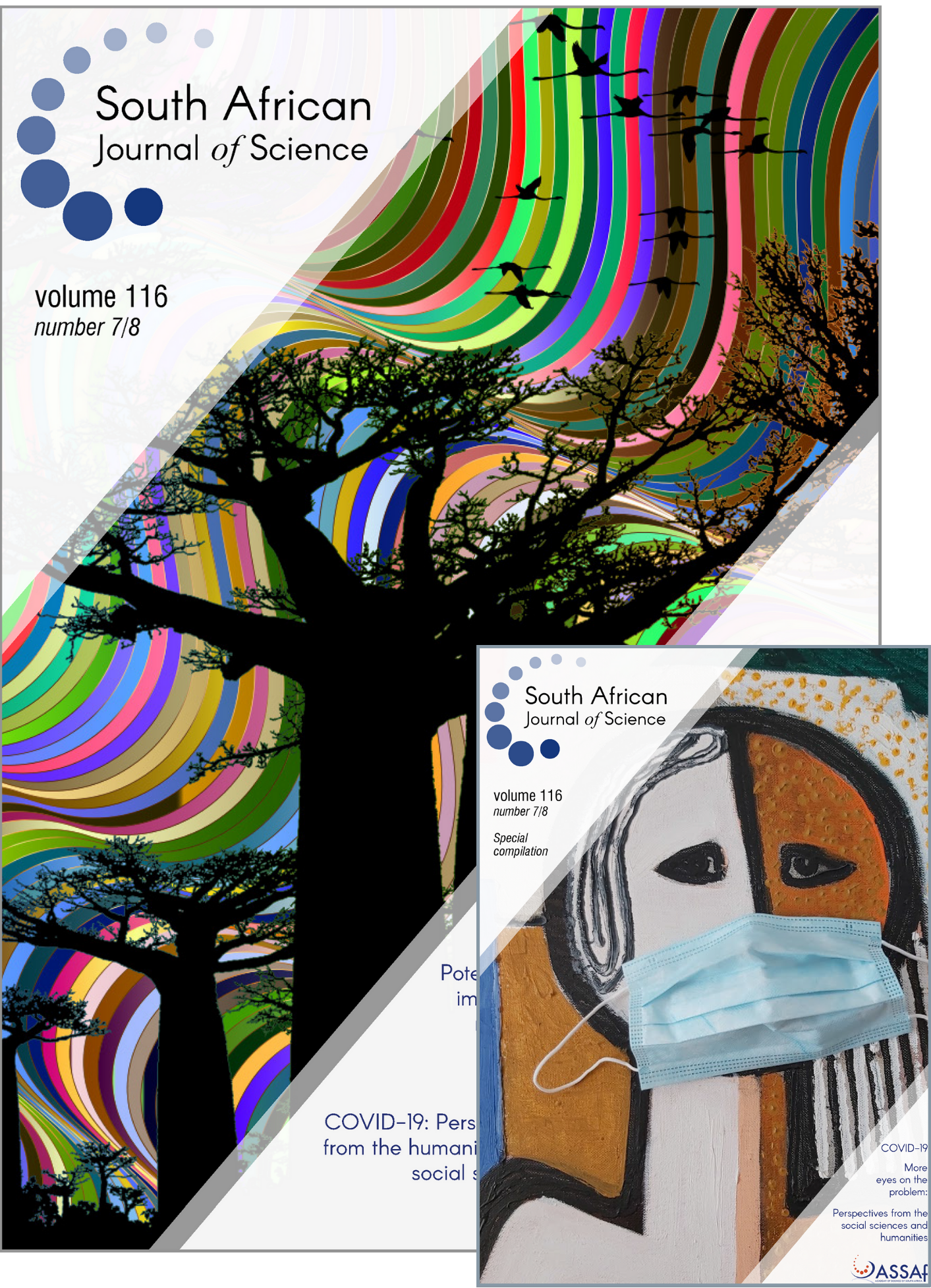Identification of solar periodicities in southern African baobab δ13C record
DOI:
https://doi.org/10.17159/sajs.2020/6813Keywords:
tree ring, carbon isotope data, spectral analysis, solar influences, climate variabilityAbstract
Spectral analysis using wavelet, Lomb–Scargle and maximum entropy techniques of the proxy rainfall record of northeastern South Africa based on annual carbon isotope (δ13C) data obtained from baobab trees for the period 1600 AD – 2000 AD show clear evidence of the presence of characteristic solar periodicities. Solar periodicities that were identified above the 95% confidence level include the ~11-year Schwabe cycle, the ~22-year Hale cycle as well as the 80–110-year Gleissberg cycle. A Morlet wavelet analysis of the δ13C data between 1600 AD and 1700 AD shows the effect of the Maunder sunspot minimum on both the Schwabe and Hale cycles during this time.
Significance:
- A spectral analysis of δ13C baobab tree ring data for southern Africa between 1600 AD and 2000 AD is presented. The results show – for the first time – that the δ13C time series contains the 11-year Schwabe, 22-year Hale as well as the 80–110-year Gleissberg solar periodicities. In addition, the influence of the Maunder sunspot minimum between ~1650 AD and 1715 AD could also be clearly identified in the δ13C data for the first time. These findings are of significant importance to investigations of solar influences on climate variability.
Published
Issue
Section
License

All articles are published under a Creative Commons Attribution 4.0 International Licence
Copyright is retained by the authors. Readers are welcome to reproduce, share and adapt the content without permission provided the source is attributed.
Disclaimer: The publisher and editors accept no responsibility for statements made by the authors
How to Cite
- Abstract 1260
- PDF 645
- EPUB 210
- XML 381












.png)